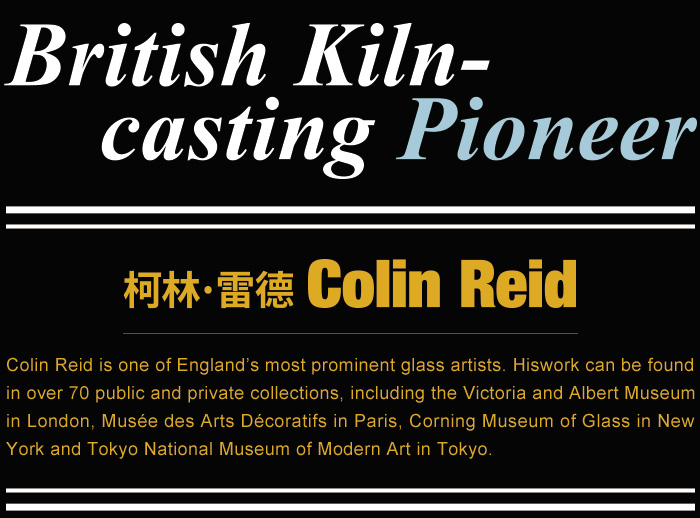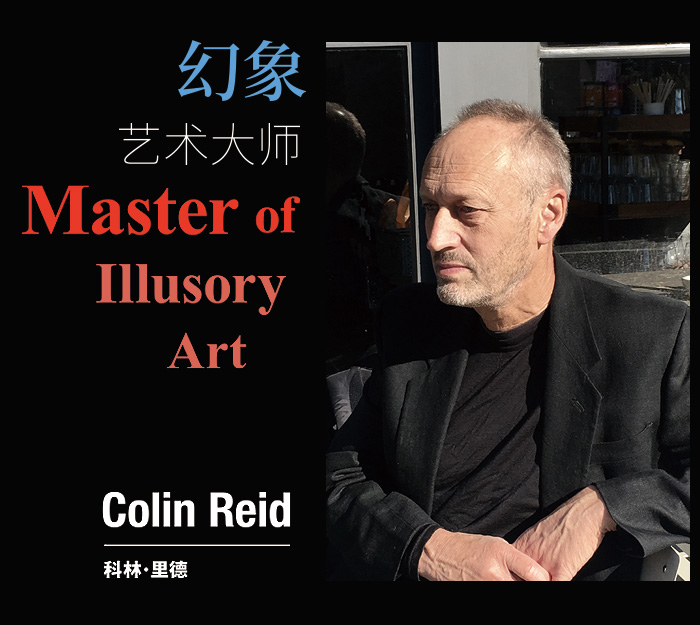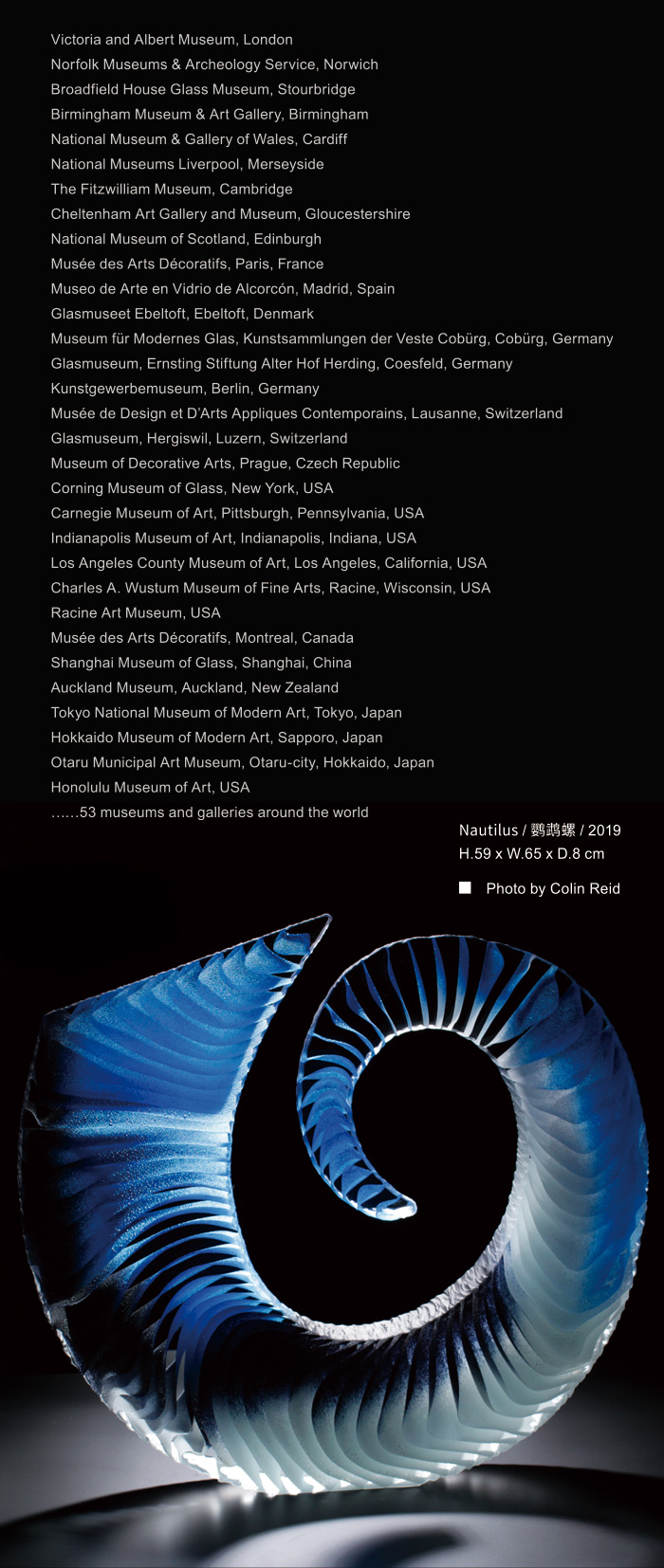-
-

-
A student of Keith Cummings in the 1970s, Colin Reid is perhaps best known in China for Bamboo Scroll (1999), a four-metre-high glass and steel installation on permanent display in the main entrance lobby of the Shanghai Public Library. Reid’s position as a British artist within the international studio glass movement and as a mentor to a succession of studio assistants, including Sally Fawkes, Angela Jarman, Bruno Romanelli, Karen Browning, Fiaz Elson and Joseph Harrington, provides the focal interest or centre of gravity for A Thread of Light. It is a record of extraordinary creativity, openness and generosity. Reid’s work since the 1970s has evolved constantly under the inspiration of formal interests in the texture of the world, the skin of things in nature and in human culture. There is a consistent, though not exclusive preoccupation with the print of reality as it registers from mould to cast to figure in the optical properties of the transparent medium.
The sculptural concept for Bamboo Scroll took as its point of departure ancient Chinese literary artefacts, namely engraved bamboo strips bound together to form a kind of flexible scroll. The design brief may have been unconsciously informed by the physical incident of the bamboo scaffolding which filled the library as a building site in April 1996 when this project commission took seed. Chinese written characters are incorporated in cast optical crystal blocks in raised and polished relief, providing cursive transparent windows into the light medium. The glass is held in a parallel ribbon structure of flame-cut and patinated steel.
-

-
The Chinese characters derive from engraved print originals, reversed out in raised relief through the mould making process, and they comprise a loosely ordered series representing elemental natural and human qualities. This is not a text as such – there is no woven narrative connection between the word sequence – but the layered disposition of Chinese written characters has clearly influenced the overall composition of the piece. This was in a sense Reid’s first engagement with written symbols as ‘found objects’, and it is the visual energy of these characters, rather than their linguistic meaning, that stands foremost. Physically and metaphorically speaking, the characters hang luminous and illuminated in the light of day. Material precedes meaning; making comes before knowing.
Along with Ring of Fire (2019), four new kiln-cast works in the current show are linked by technique, notably here in the artist’s recent use of colour inclusions as internal patterning within abstracted forms, and with titles variously invoking the artist’s maritime interests as a keen amateur yachtsman: Nautilus; Wave; Vela [the Italian word for ‘sail’, or sail boat]; and Battuto Vessel. Battuto [meaning ‘beaten’ in Italian] is a wheel-cutting technique in which the glass surface is treated with multiple abrasions and polished to resemble beaten copper or pewter surface. The English word vessel can mean both a container or household utensil and a boat or ocean-going craft.
Reid’s distinctive counterpoint of moulded surface relief with clear facets exposing internal dimensions in kiln-cast optical crystal is represented in Still Life with Sunflowers (2019), Walk in Taganana (2019) Still Life with Corn (2017) and Shoal of Roach (2016). The interplay of reflective and refractive properties, and the spatial illusions these qualities give rise to as we move around the object, creates a kind of animated presence in the work. In his own words:
-
If I were to identify a single thread that runs through my work it would be the influence of nature. That is the source to which I return for inspiration and fresh material for my work. I work in kiln-cast glass, using various moulding techniques to make the forms and moulds in which I cast my glass. My current work is mainly in optical glass because I like its purity. Firings are long, three weeks is typical, so I can get thickness and depth. When the piece comes out of the kiln it is only the start of the making process. There is much cold-work to be done, grinding, polishing, and sandblasting. The pieces evolve and change at this stage as I respond to what has come out of the kiln. Chance plays its part. The tension between what is planned and controlled and what is unexpected can be both creative and disastrous. I do not open the kiln if I am having a bad day. The quality I am after is elusive, impossible to describe, but I know it when I see it.
-




